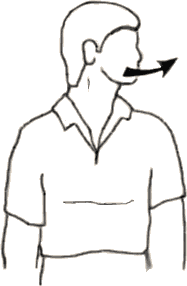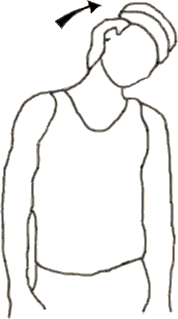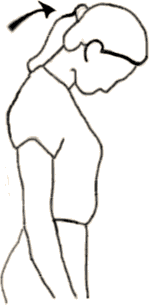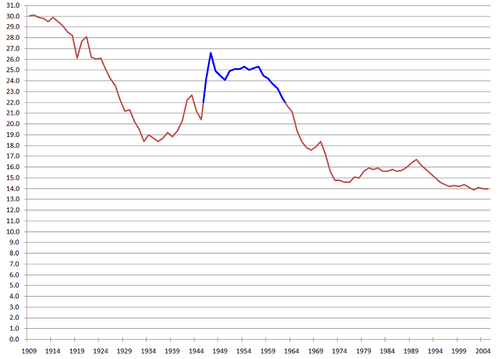Posts Tagged ‘memory’
 A learning brain learns best with color, movement, and gentle learning music
A learning brain learns best with color, movement, and gentle learning music

I just published my first article for today (Saturday, June 12, 2010, in the morning), entitled: “Brains love movement & ‘take-a-break’ music (and maybe even a power nap?). If you wish to review that article, simple click on the title immediately below:
Brains love movement and “take-a-break” music (plus . . . maybe even a power nap?)
Someone reminded me that that is true for working brains. They do need a break from working and learning.
What about a learning brain in the very act of learning?
Herewith, my second article for today (Saturday, June 12, 2010, in the afternoon), entitled: “A learning brain learns best with color, movement, and gentle music.”
A brain that is actually in the process of learning–a learning brain–also likes movement, even while engaged in the very act of learning. Complex as the brain is, it still loves the simple things (color, movement, and gentle music), to help it learn more easily and remember better, stronger, longer.
What do you mean by color?
If you study and learn using pastel-colored paper with regular pens and pencils, or using multi-colored pens or pencils on regular white paper, you engage a part of the mind that loves color and enhances learning. Working on a blackboard at school (if it is colored green, as most are nowadays), with or without colored chalk, also stimulates the brain for most efficient learning.

If you can find ways to move your body while learning or studying, you will jump ahead of the class. 😮 An example at home might be jumping on a rebounder (mini-trampoline) while memorizing something you may have found not easy to memorize before. An example from the classroom might be squeezing a small soft sponge ball in your left hand while writing with your right hand (or vice versa if you are left-handed), which engages a part of your brain that loves physical movement and will help you learn better if you move part of your body in some way. Even chewing gum is helpful, although most teachers prefer this to be done at home. 😮
What do you mean by gentle music?
Not rock. That will just make your body want to move, while nullifying your thinking brain. 😮
The learning brain loves music that is swinging low and easy, about one beat per second or 60 beats to the minute, sometimes called “baroque” music. This engages a part of the brain that amplifies learning. Hey, you zing to the head of the class.
“Uprightness” is also needed for most efficient learning
This is a good topic for a future article. [See P.S. below for future article.]
Blessings and Friendship,
Doc Meek, Saturday, June 12, 2010 (2nd post, in the afternoon)
At Sherwood Park, Alberta, CANADA; not at South Jordan, Utah, USA
P.S. Click on the title below for this future article, published Thursday, June 24, 2010:
The learning brain needs “uprightness” for greatest efficiency
 Brains love movement and “take-a-break” music (plus sitting exercises & maybe even a “power” nap?)
Brains love movement and “take-a-break” music (plus sitting exercises & maybe even a “power” nap?)
Photo from: www.lumosity.com/blog/benefits-of-power-napping/ …………………………………………………………………………………..
When was the last time we gave our brain a break?
We are not just talking about a weekend or a holiday here.
We are wondering if we have learned (yet) to give our brain a break, whether sitting at school or sitting in the workplace. Or sitting studying, or sitting working at mental tasks at home? How about working on the computer?
[ Or even just “potato couching” in front of the TV? 😮 ]
All that is needed is to stop our brain task momentarily, stand up, take several deep breaths, and “shake, rattle and roll,” using our best singing (or non-singing) voice if possible. 😮
If it’s a public place and elaborate physical displays are not appropriate, simply stand, take three deep breaths, stretch our arms to the ceiling, and sing silently to ourselves, eh? 😮
Or we might just have to stay sitting, take three deep breaths, wiggle our feet and hands under the desk, smile . . . lean back . . . smile deeply . . . and everybody will wonder what we’ve been up to. 😮
Add some “take-a-break” music (earphones if in a public place) and hey, we’re “up, up and away” with our brain! Like Superman or Superwoman eh!
What’s a “power” nap?
It’s a short nap taken during the day (right after lunch?), perhaps 10 to 20 minutes in length (not too long or you’ll wake up groggy). It’s purpose is to refresh our body and brain for the ongoing daily tasks.
You would think that if you are chronically sleep-deprived, this would be just the ticket. And it might be, dependent upon how sleep deprived you actually are. Sadly, if you are seriously sleep deprived the “power” nap may “backfire,” leaving you more groggy than you were before you took the nap. In this case, do something about your ongoing sleep deprivation overnight before your body or mind stop you with symptoms and illnesses of various kinds (physical and mental). Does this motivate you? Or not?
How about some simple “right-at-the-desk” stretches?
Exercises below from this website address (copy and paste into your web browser):
http://www.womensheart.org/content/Exercise/stretching_exercise.asp
Stretches for side of neck:
|
 |
Stretches side of neck
|
 |
Stretches back of neck
|
 |
Stretches side of shoulder and back of upper arm
|
 |
 “A library is thought in cold storage.”- Penned by Herbert Samuel [Samual?]
“A library is thought in cold storage.”- Penned by Herbert Samuel [Samual?]
Librarians’ duty was to guard the doors
I remember when I was in grade school, more than half a century ago now.
The librarians thought it was their duty to guard the doors to the library, lest the students get in, take books off the shelves, and damage them.
Nowadays, the doors are open and the books are often displayed in open racks, inviting students to pick them up. What a nice change. “Books are to be read and enjoyed,” not guarded from overuse.
Picture from Shoemaker Elementary, Macungie, PA
And the computers are in the library as well. The internet has brought multiple, multiple libraries to the students’ fingertips (literally).
Some technical people have insisted numerous times that the day of the hard-copy book is dead and gone.
Somehow though, it persists, and will persist.
There is nothing like a good book in your hands to curl up with, like an old friend.
Curling up with a computer just does not have the same appeal. 😮
Besides you an go backwards and forwards in a book in a way you cannot on a computer, and mark special passages. Take anywhere. No electrical power source needed. At least in daylight. How about at night? Even a candle might be enough, eh? 😮
Enjoy real books, if you can.
They will always be here, and there.
To love.
To cherish.
To read.
To have.
To hold.
Forever.
Sounds like a good marriage, doesn’t it? 😮
Perhaps it is.
Doc Meek, Friday, June 11, 2010
At Sherwood Park, Alberta, CANADA; not at South Jordan, Utah, USA
 “A paper brain is a good thing to have.” – Doc Meek
“A paper brain is a good thing to have.” – Doc Meek
|
|||||||||||
Images from: http://www.ataglance.com/ ………………………………………………………….
Your own personal paper brain–any size you like 😮
For years, professionals of all types have been using appointment books, pocket diaries, or day-books to help them keep track of busy days. Mothers of all types have been using home bulletin boards, daily diaries, or refrigerator calendars to help them keep track of busy days for themselves and children and husbands, a complex task indeed.
These paper brains are invaluable. I always encouraged the students whom I was helping to overcome learning problems to carry a paper brain. I always told them that a paper brain was probably the best friend their brain could have.
Some professionals, mothers, and students have now turned to electronic “keeper-trackers” to help them through their often over-scheduled days. These have been dubbed “PDAs.”
What’s a PDA?
Some of the earlier PDAs (Personal Digital Assistants) were simply electronic versions of paper brains, except that the available “writing space” or “memory space” was much larger. These earlier PDAs had no connection to the internet. Wireless functions are not required for a simple paper brain equivalent.
According to Wikipedia, a PDA is “a personal digital assistant (PDA), also known as a palmtop computer . . . a mobile device which functions as a personal information manager and has the ability to connect to the internet. The PDA has an electronic visual display enabling it to include a web browser, but some newer models also have audio capabilities, enabling them to be used as mobile phones or portable media players . . . . Many PDAs employ touch screen technology.”
Can we keep up with our paper brain (or electronic equivalent)?
Even though our busy schedule may not overtax the paper brain or the electronic brain, our busy schedule may overtax us, personally. Our brain may be running on overload. And over-loaded brains, sooner or later, bring with them possible anxiety, burnout or depression.
What’s one answer?
Scheduled time for ourselves.
For ourselves alone, private time.
Of course we have to put this appointment with ourselves faithfully into our paper brain or our electronic brain, or it won’t happen.
Book it, and keep it. Then we’ll reap the rewards of a busy day with a real plus:
Time for us.
Of course, you have to consult the paper brain 😮
Sometimes someone may upbraid me for missing an appointment: “You should book your appointments in your paper brain; that’s what others do; that’s what you teach your students.”
My reply?
“I did book it.”
“Then why did you miss this appointment.”
“I did not remember to look in my book.” 😮
Hey, even the best of well-intended systems can break down occasionally, eh? 😮
Summary and Conclusion
In our modern world, anxiety, burnout and depression can be kept at bay by keeping solid appointments with ourselves for scheduled quiet time. The brain loves it. It absolutely needs the respite, and more than that, the brain needs the time to attend to different, vital and important tasks not normally addressed.
Way to go, paper brain (or PDA), for looking after me!
Doc Meek, Saturday, June 5, 2010
At Calgary and Cochrane, Alberta, CANADA; not at South Jordan, Utah
 Of all the champions in the world, mothers are tops!
Of all the champions in the world, mothers are tops!
“Holy Moley,” as Captain Marvel used to exclaim in the comics of my youth.
Sunday again in Canada. How can it be Sunday again? It was just Sunday a couple of days ago, eh?
One day I showed up at a reunion event and my hair was combed straight back, instead of my usual parted version. My hair looked like a small field of grass, swept back by a mighty wind. Everyone kept asking, “How come your hair is flying straight back?”
“Because time is flying past like you wouldn’t believe!” 😮
So, speeding or not, “believer” or “non-believer,” Sunday can be a great gift for us all. Everybody. A philosophical Buddhist, a kind Muslim, a gentle Christian, a studious Jew, a meditative Existentialist, a thoughtful Secular Humanist, a contemplative Atheist, a generous Hindu, a gracious Baha’, a melodious Sufi, and everybody else, betwixt and between, among and beyond, and all whom I did not write in here at this particular moment in time. Let me know if I missed you and I’ll remember to include you next time, OK? All are welcome.
Especially Mothers, eh?
All are welcome to DSD.
DSD?
Do Something Different.
DSD one day a week, not necessarily Sunday, the first day of the week. Pick any day. Your brain and your body need it.
Your brain will thank you forever if you DSD [is that Do Some Dancing? :o] once a week, and oftener throughout your workday world, just by grabbing small moments in time to give your brain the break it needs (however short) to do its best for you long-term.
Charter school champion with the light of his life: the mother of his children
Mothers are always the greatest champions in the world, wouldn’t you say?
I noticed in the The New York Times, May 6, 2010, that David Levin, educational administrator, teacher trainer, and “workaholic” [it takes one to know one, eh?] takes some time on Sundays to DSD.
This time with his family is not only precious, it vivifies and refreshes his brain (and heart and soul).
So remember to TST to DSD. Take Some Time to Do Something Different. Every week.

David Levin with his wife, Nikki Chase-Levin; their son, Max; and their dog, Athena, in Riverside Park.
David Levin, 40, co-founder of the celebrated KIPP charter school network and superintendent of KIPP’s New York City schools, works 75 to 90 hours a week training teachers, raising money and shuttling among six schools. Even Mr. Levin’s Saturdays tend to be consumed by KIPP, which stands for Knowledge is Power Program.
Sundays, though, are reserved for his wife, Nikki Chase-Levin, 38, a marketing consultant (they met speed-dating) and their 15-month-old son, Max. The family lives on the Upper West Side.
– Excerpt from from The New York Times story by Elissa Gootman, published May 6, 2020
Work, love, spend time with your family, eh!?
Blessings, Doc Meek, May 9, 2010, at Sherwood Park, Alberta, CANADA
 Hyperbaric Oxygen Therapy (HBOT) provides relief for a host of neurological and learning problems
Hyperbaric Oxygen Therapy (HBOT) provides relief for a host of neurological and learning problems
Hyperbaric Oxygen Therapy (HBOT), or 100% oxygen supplied under varying pressures in a tightly-sealed compression chamber, has proven to be an astounding help for a host of brain problems. Side effects are minimal to non-existent. You would think the mainstream medical community would quickly make it a solid adjunct to whatever else they are doing for the healing of toxin-damaged or older brains. In reality, other countries are far ahead of North America in this regard.
Horizontal lie-down HBOT one-person compression chamber; photo from www.adventisthealthnw.com/HM-HBOT.asp
Sit-up HBOT one-person compression chambers at Canadian Hyperbarics, at the General Hospital, in Edmonton, Alberta, CANADA; Link to Canadian Hyperbarics website: http://www.canadianhyperbarics.com
Photo by Director Gordon Ward, Director, Canadian Hyperbarics, http://www.canadianhyperbarics.com
………………………………………………………………………………………………
Despite the wide array of problems for which HBOT is effective, our Canadian and US society has managed to keep this valuable and life-saving therapy in an ongoing controversial turmoil for decades. This may be because it appears to be expensive, and governments are fearful of incurring very large costs if large numbers of people realized how useful and effective it is.
In reality, the costs of HBOT pale in comparison with the huge costs associated with the ongoing and very expensive conventional treatments for heart disease, stroke, neurological problems, diabetes, MS, etc.
Part of the problem may simply be that the Undersea & Hyperbaric Medical Society (who devised the hodgepodge and limited list of conditions which government and insurance-approved facilities generally use to prevent access to this priceless therapy) is an ultra-conservative organization not prone to real leadership in HBOT.
Thank heaven for the private freestanding clinics that know that hyperbarics will heal a host of brain problems and other problems, and that provide genuine and much-needed leadership in HBOT.
One such is Canadian Hyperbarics at the General Hospital in Edmonton, Alberta, CANADA. They will help anyone who is up against the barriers of the highly-limited treatment provided by government or insurance-funded HBOT.
The Director of Canadian Hyperbarics is Gordon Ward, a personable and internationally-known expert in the HBOT field. Humorous and self-effacing, Mr. Ward has unfortunately often been obliged by forced circumstances to reluctantly demonstrate greater knowledge and expertise than many government or insurance-funded facilities staffed with hyperbaric physicians. More about Canadian Hyperbarics in future posts.
For more information about Canadian Hyperbarics and HBOT, please copy and paste the following URL into your computer’s browser line, the line you use when you want to get to a specific website on the internet:
http://canadianhyperbarics.com/index.html
Mitigation of neurological problems, including memory problems
There are more than 75 million “baby boomers” in the United States, and millions more in Canada, who could use HBOT to ward off memory problems as they age, and this would require a huge outlay of public funds if HBOT were approved for this purpose:
WIKIPEDIA – The Free Encyclopedia, graphed the “baby boomer” cohort:
United States birth rate (births per 1000 population). The blue segment is the postwar baby boom.
…………………………………………………………………………………………………..
I am familiar with the mitigating effects of HBOT on neurodegenerative problems, Cerebral Palsy, LD (Learning Disabilities), ADD (Attention Deficit Disorder), ADHD (Attention Deficit Hyperactivity Disorder), ODD (Oppositional Defiant Disorder), Autism, and a host of other brain problems and potential brain problems.
Governments typically only recognize the effectiveness of HBOT for a short list of ailments, such as carbon monoxide poisoning, gas gangrene, necrotizing tissue (“flesh-eating disease”), near drowning, decompression sickness (“the bends” to divers), crush injury, burns, exceptional blood loss (severe anemia), advanced wound care including diabetic wound care, and so on. It is a very narrow and short list of 13 conditions created by UHMS (Undersea & Hyperbaric Medical Society) and adopted by governments and insurance companies for treatments for reimbursement purposes. This protects governments and insurance companies from the large costs that would be incurred if all of the ailments that can be treated effectively were appropriately approved for coverage.
It must be said here that many countries in other parts of the world are far ahead of the United States and Canada when it comes to proper utilization of HBOT for a wide variety of conditions. For one thing, they have far more HBOT compression chambers than is the case in the US and Canada. Some countries even have mobile HBOT chambers for emergency use.
The prevailing philosophy in many countries worldwide is to increase immediate access to a HBOT chamber in the case of heart attack and brain attack (stroke), as it has been proven beyond all reasonable doubt that immediate HBOT treatment makes a huge difference to outcomes for the victims of these common problems. HBOT is, literally, life-saving. More, it vastly increases the future quality of life of those it saves. And those it prevents from having serious brain problems.
To your brain health!
Doc Meek, May 8, 2010, at Sherwood Park, Alberta, CANADA
P.S. If you wish to pursue this topic of HBOT further, Kathy Summers has written a top-notch article.
Thank you, Kathy! LINK: http://www.healthwriting.com/health/hbot/
 Want your brain sharp? Give it a rest
Want your brain sharp? Give it a rest
Today is Sunday and it made me think about reminding all of us to give our brains a period of rest, a sabbath (lower case).
Many religions observe a weekly day of rest, a Sabbath (upper case), a day to turn their work-a-day thinking/feelings in another direction. To look upward and notice loftier things. Or softer and gentler things. Things of the heart, things of the spirit. Many Muslims observe Friday as their Sabbath; many Jews observe Saturday as their Sabbath; and many Christians observe Sunday as their Sabbath.
Many people relate to nature as their sabbath.Walking in nature can sometimes provide an uplift found nowhere else.
Universities may provide a sabbatical year for professors, a year in which they can relax and refresh and renew their research interests.
“Believers” and “Non-believers” Alike
Whether we are “believers” or “non-believers,” our brains still need a “time out,” a sabbath. It improves our ability to learn, to remember, to be sharp. Sharp and awake. Mentally, physically, socially, emotionally, spiritually.
As Stephen R. Covey (1989, 2004) reminded us in The 7 Habits of Highly Effective People: Powerful Lessons in Personal Change, if we just keep on sawing with the same old saw, over and over again, it will get dull.
He told us that it is essential to stop, to “sharpen the saw.” If we just keep sawing on, hoping to finish the pile of lumber today, we just become less and less efficient. Finally, we are still working very hard indeed and not much lumber is getting cut. The saw is simply too dull to do its work properly.
Stop. “Sharpen the saw.”
How Often Do Our Brains Need R and R?
How often should we stop to sharpen the saw, to give our brain a time of rest and renewal?
Every 7 years?
Annually?
Monthly?
Weekly?
Daily?
Hourly?
Every 10-20 minutes?
All of the above? Yes, and I’ll tell you why.
Our brain, somewhat analogous to our muscles, needs work to develop and be strong, and needs rest to recuperate and renew. Such renewal periods, whether taken after 20 minutes of homework, or a hard week’s work at the office or factory, improve memory, focus, attention, interest, and all manner of cognitive abilities that delight and bless us.
Now . . . today . . . and on to infinity.
Doc Meek, May 2, 2010
Sherwood Park, Alberta, CANADA
 “My son reads, closes the book, and looks blank.”
“My son reads, closes the book, and looks blank.”
A Mom asked me, “How do you make reading comprehension go up?”
A teacher asked, “What steps can I take to help the students improve their memories of what they have read?”
The Triple M is the short answer:
“Make Mental Movies.”
Here is an excerpt of what I wrote to the teacher (which I also shared with the Mom):
Slow reading is symptomatic of inadequate comprehension in the reading process. When you slow down and read even slower (at first) and take the time to learn how to make pictures (still photos, and especially movies) in your mind’s eye as you slowly read forward now, you will find two astounding things happening:
(1) The brain quickly learns to make movies faster and faster as you persist in this initially slow process.
(2) Even when the initial reading is not fast, the movies dramatically increase comprehension and memory, so the brain quickly figures out, hey, I can go faster now. As the speed of reading and making movies simultaneously goes up, astoundingly and paradoxically, the comprehension and memory zoom up also.
Hey, try it with some simple “Dick and Jane” stuff initially and don’t even read a full sentence at first. Example:
“The black dog chased the red ball down the street,” is not read altogether to completion at first.
First you read only “The black dog…” and make a picture in your head of a black dog.
Then you read only “chased the red ball” and make a movie in your head of the black dog chasing the red ball.
Then you read “down the street” and make a movie with background now, if you haven’t already done that background part, and see the action!
Then, rewind the movie by twirling your hand around in the air in a tight circle, as if you were rewinding a video “manually.”
Smile and laugh, eh?
Then, as I say to my proteges that I am mentoring:
“Now remember, don’t remember everything;
just watch the movie and see what happens.” 😮
After they watch the movie, I ask them questions to see what their comprehension and memory is. I ask “sneak questions” like, “What is the dog running on?” Or, “What is in the background?” Or “What is in the sky above?” Or “What is in front of the dog?” Or “What is the dog running on?” Or
“Does the dog have a short tail or a long one?”
The beauty of this protocol and the questions is that everybody has different answers to the same “content” question, proving that individuality and vastly improved memory and comprehension go hand in hand.
Beautiful, eh?
Here’s the “goofy mantra”:
Go… slowly… even more slowly… at first.
Then as you patiently plod along… smile… at first… laugh… the pace picks up automatically…
slowly over time… and soon…
You are going a hundred miles an hour and memory and comprehension are beautiful, not to mention your movies.
Start slowly… very slowly… lots of time to learn to go fast!!! 😮
Love your initial lack of speed now . . . smile . . . laugh . . .
Have fun being a slow really fast learner. 😮
Doc Meek, Active Learning Specialist
Sherwood Park, Alberta, CANADA; South Jordan, Utah, USA







